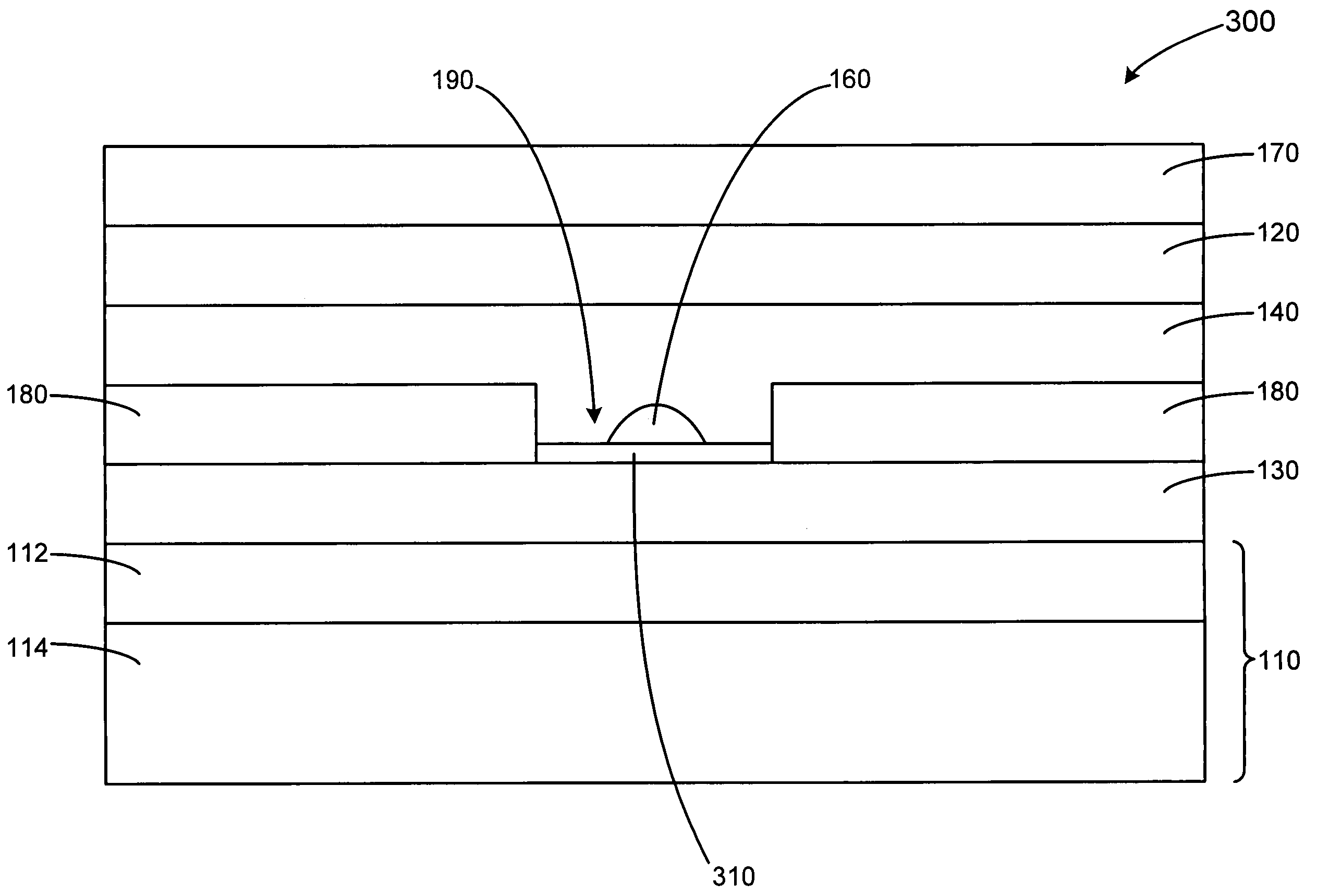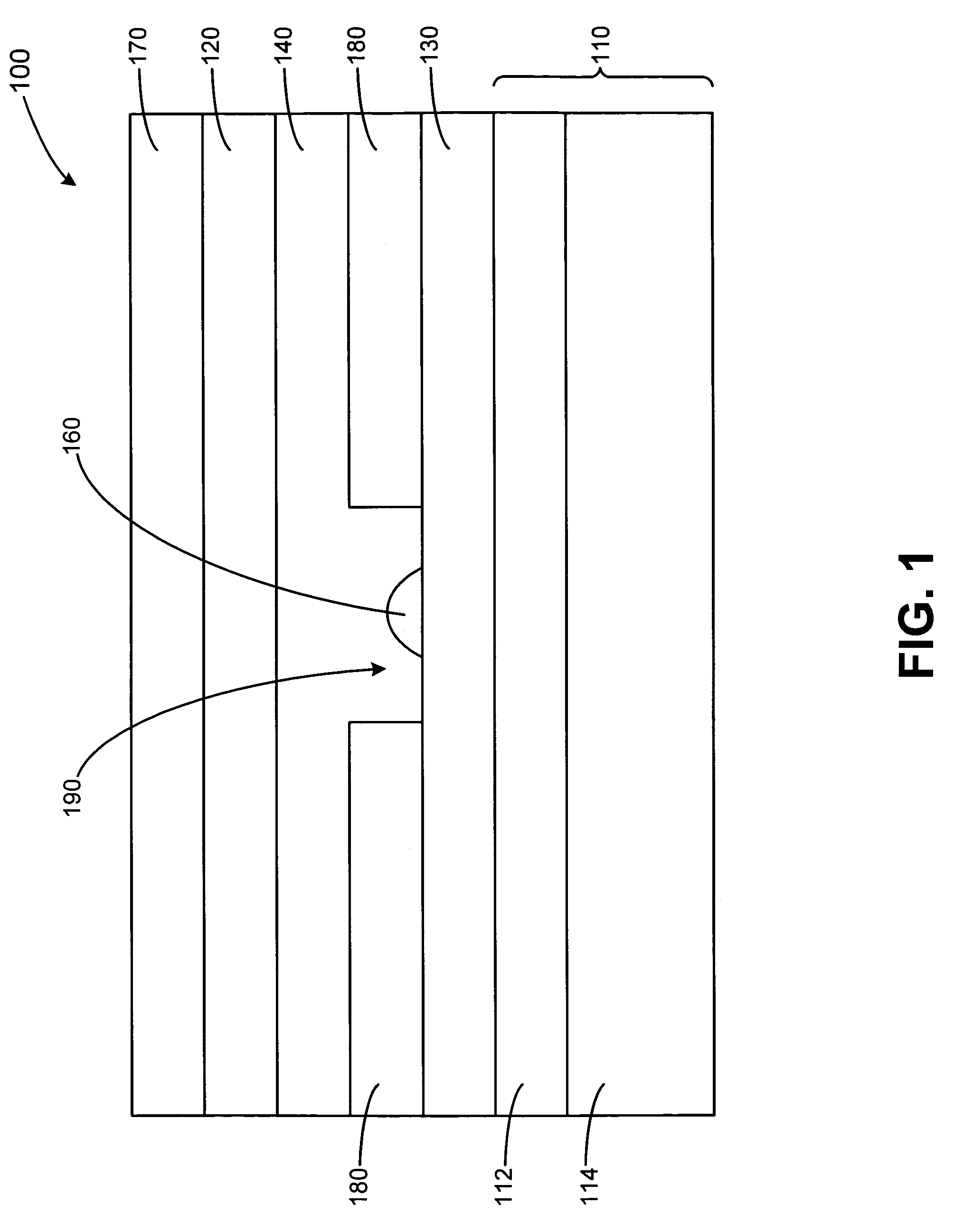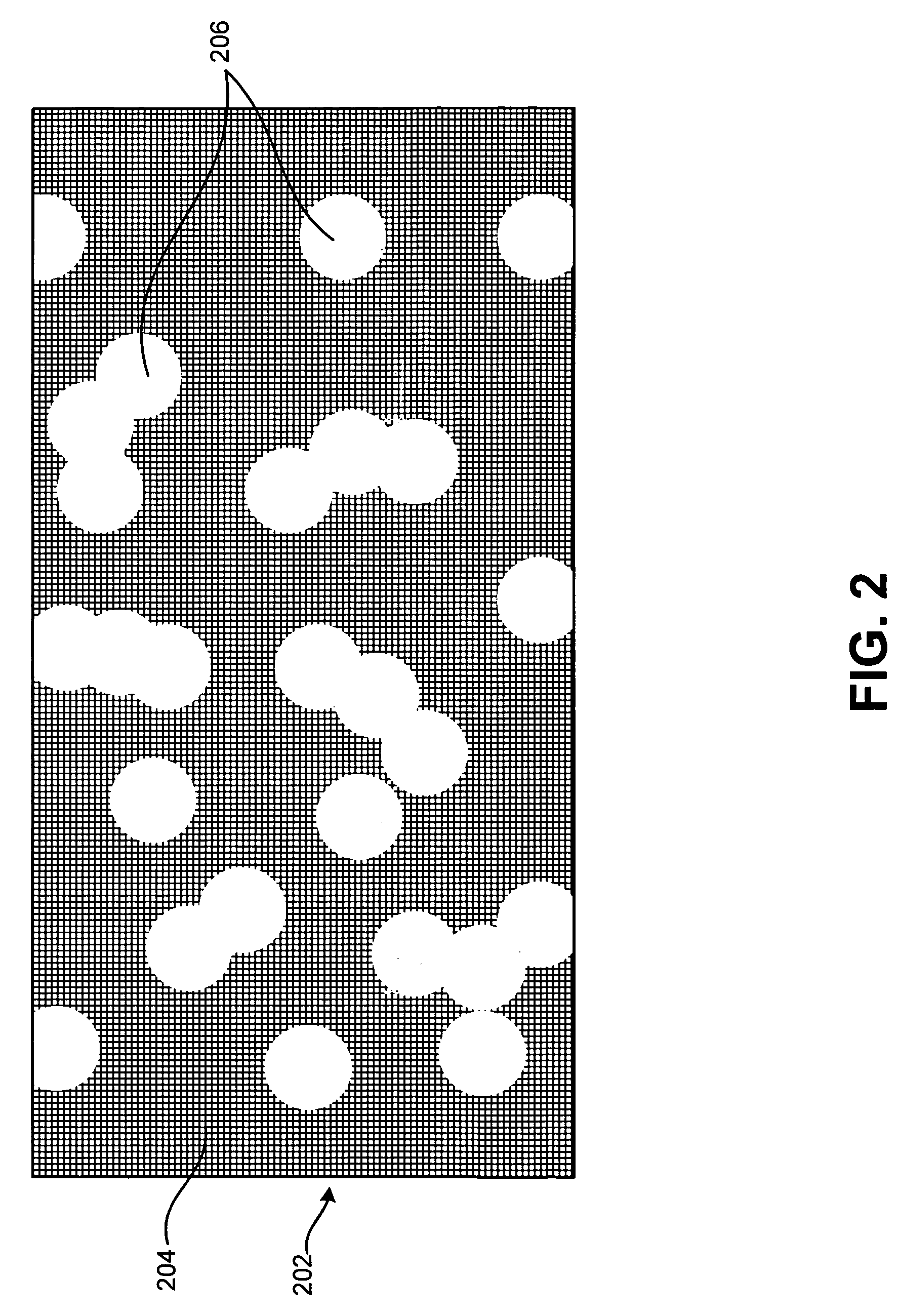Nanoscale programmable structures and methods of forming and using same
a programmable structure and nano-scale technology, applied in the field of programmable structures, can solve the problems of undesirable forming of memory devices and other devices on separate substrates, requiring a relatively large amount of space within the system, and forming various types of memory on separate substrates may be relatively expensive, so as to achieve the effect of reducing the drift of the devi
- Summary
- Abstract
- Description
- Claims
- Application Information
AI Technical Summary
Benefits of technology
Problems solved by technology
Method used
Image
Examples
example i
[0046]A 100 nm thick silicon oxide layer is grown on a silicon substrate. Next, a first electrode material (e.g., 100-200 nm of Ni) is deposited onto the silicon oxide. The first electrode material is patterned (e.g., using optical lithography) to form the bottom inert electrodes. Immediately following first electrode material patterning (to avoid significant ambient surface contamination of the material), electron-beam resist (e.g., 100 nm of PMMA) is deposited over the silicon oxide and first electrode material. The resist is applied by spin casting and the resist is baked at 170° C. for about 18 hours to ensure complete solvent removal. The insulting material is then patterned by exposing the PMMA using a JEOL 6000 e-beam lithography system having an area dose of 1200 μC / cm2 to define nanoscale openings aligned to the bottom electrode. The resist is then developed by exposing the patterned resist for 20 seconds in a developer including 11:10:1 MIBK:CS:MEK (MIBK is 1:3 methyl isob...
example ii
[0052]This process is the same as the process of Example I, with the exception of the electron beam parameters, the Ag dissolution is performed using UV light only, and a gold top electrode is added to prevent tarnishing of the silver.
[0053]Following the deposition of the PMMA, the PMMA is exposed at 800 μC / cm2 using the JEOL 6000 EBL system and the patterns are developed described above. Approximately 50 nm of Ge30Se70 in then evaporated at 0.05 nm / sec along with a 30 nm thick Ag overlayer and the Ag is diffused by exposing the metal to 405 nm UV radiation at an energy of 1 J / cm2 to ensure Ag penetration throughout the entire thickness of the electrolyte film. A top electrode bilayer of 80 nm of Ag and 50 nm of Au is then deposited. This stack is then patterned using optical lithography and a combination of sputter etching (to pattern the Au) and wet etching as described above.
[0054]Methods of Programming and Using the Device and Structure
[0055]As noted above, information may be st...
PUM
 Login to View More
Login to View More Abstract
Description
Claims
Application Information
 Login to View More
Login to View More - R&D
- Intellectual Property
- Life Sciences
- Materials
- Tech Scout
- Unparalleled Data Quality
- Higher Quality Content
- 60% Fewer Hallucinations
Browse by: Latest US Patents, China's latest patents, Technical Efficacy Thesaurus, Application Domain, Technology Topic, Popular Technical Reports.
© 2025 PatSnap. All rights reserved.Legal|Privacy policy|Modern Slavery Act Transparency Statement|Sitemap|About US| Contact US: help@patsnap.com



